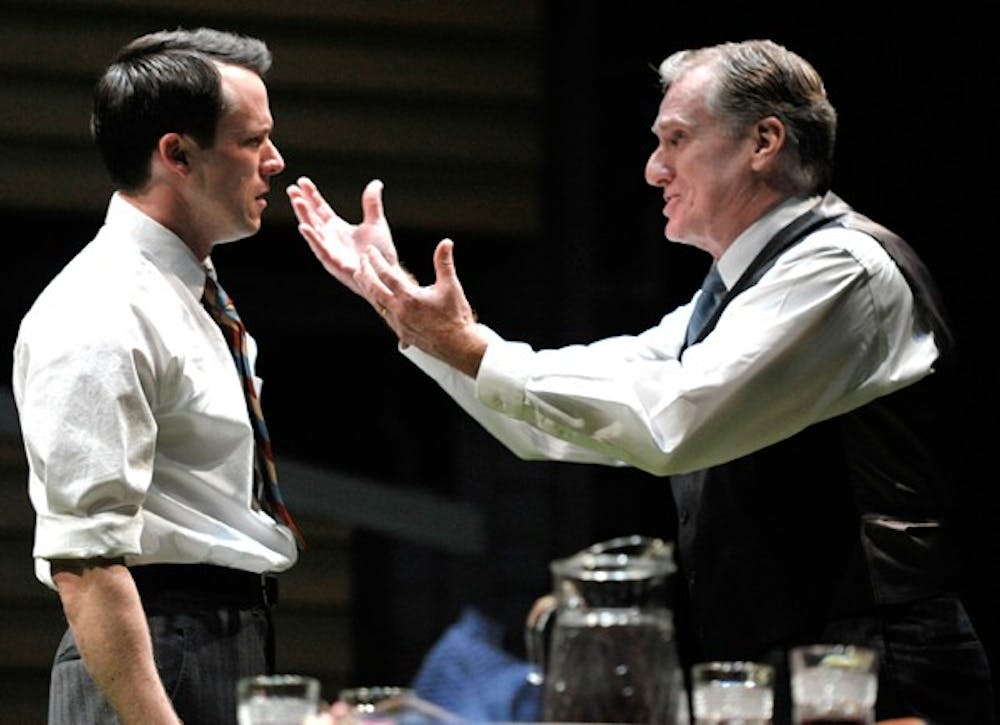Art Verdict: 4 of 5 Stars
Arthur Miller’s “All My Sons” is situated in a serene suburban backyard where the sun is shining and birds are chirping.
This picturesque setting, however, is not even close to representing the drama and tragedy in the play that gives the term “family issues” a new meaning.
“All My Sons,” directed by Davis McCallum and put on by PlayMakers Repertory Company, provides a disturbing look into the damage that money and lies can cause.
Taking place in America after World War II, the play revolves around the Keller family. Their two sons went abroad as part of the war effort, but only one has returned.
The Kellers are a seemingly normal family with everyday problems. Eventually, their simple lives develop into a suspense-filled, captivating story that one would expect from a modern soap opera.
Unlike a soap opera, however, the play has an additional element of social commentary that analyzes the extent to which Americans value money.
A theme throughout the play, the pursuit of money, connects the many tragedies that fall upon this family.
The play shows that individual and family actions still have an effect on the world, illustrating that people are responsible to the rest of the world and not just their family.
The stage was simple but effective in its ability to create a sense of being in someone’s backyard. The action took place in the backyard, but the back of the house and porch were visible at the back of the stage.
Characters could be seen performing daily tasks in the windows of the house in the back of the set as the main action occurred in the front of the stage.
From Christian Conn’s portrayal of protagonist Chris Keller to Lucas Griffin’s minor role as Bert, a local neighborhood boy, the small but memorable cast was superb. The acting in “All My Sons” draws the audience in and completely envelops them in the post-WWII era. There were a few line flubs which were temporarily distracting, but the overall story was engaging.
The costumes were also authentic of the time period, capturing the wholesome veneer of the ’40s.
The play’s action takes place in a day, and the lighting was subtly adjusted with each scene to show the progress of natural light throughout the day.
However, typical of the legendary playwright’s works, the production is not a play to see for an uplifting experience. It did have its positive moments, but in the end it leaves the audience feeling burdened, similar to watching a car wreck but not having the ability to stop it from happening.
Despite the play’s charming moments, one cannot help but understand that, as the character George Deever puts it, everything the characters have is “covered in blood.”
Contact the Arts Editor at arts@unc.edu.




